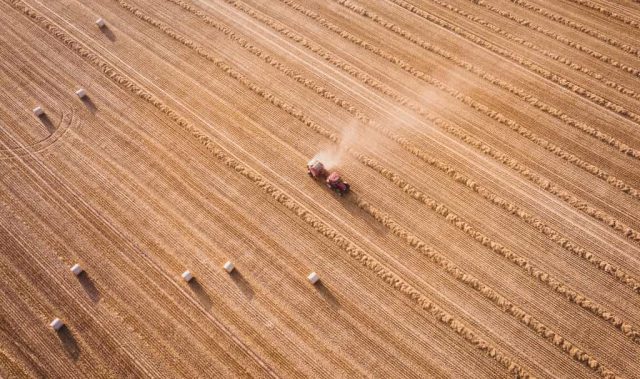
AsianScientist (Jun 30, 2014) – One solution to China’s growing water supply problems might be to reorganize the country’s crop production and trade, especially in agricultural provinces such as Inner Mongolia, Heilongjiang and Hebei, according to new report published in the journal Proceedings of the National Academy of Sciences.
“Our analysis provides a framework for understanding how such policies would benefit China’s water use in the future,” said study co-author Denise Mauzerall, professor of environmental engineering and international affairs. “In particular, corn production and trade at the domestic level might be an area to target as changes could significantly reduce national water use for irrigation.”
Of China’s industries, agriculture is the most water-intensive in terms of production and covers most of the country’s northern provinces. Crops like corn, rice and wheat thrive best in these drier regions, but rainfall is limited, and stores of underground water are diminishing. To fulfill high production demands, water is drawn from underground reservoirs (aquifers) in the northern provinces and used for irrigation more rapidly than it is replenished.
Water used during crop production is referred to as “virtual water.” Through food trade, these water resources are transferred across borders in what’s called a “virtual water trade.” The researchers found that, in China, these transfers mostly occur from dry agricultural areas to wetter provinces. This situation places strain upon China’s water reserves and will only intensify as China’s economy and consumption of water-intensive food continues to boom. While growing crops in the wetter regions would be more water efficient, land in those places is either urban or industrial or difficult geographically (mountainous terrain, etc.), the researchers report.
“The need for China to include ‘virtual water’ in its national policy has been pointed out. Our provincial-scale domestic analysis of the country’s virtual water trade is key to guiding such policy planning,” said lead author Carole Dalin, a Princeton University Ph.D. student studying environmental engineering.
To this end, the research team combined a hydrological model with domestic and international trade simulations to determine the efficiency of China’s food trade in terms of water use as well as the role of foreign trade in this virtual water-trade system. In particular, the researchers sought to answer the question: Is there a way to reduce China’s water use without decreasing national food security?
The researchers looked at domestic and international trade of corn, rice, soy and wheat, along with such livestock products as ruminant (animals like cattle, goats and sheep that subsist on plant matter), pork and poultry. These products accounted for 93 percent of China’s domestic food supply in 2005, the last year with available data. The researchers combined this information with water use across provinces–from both rainfall and irrigation sources–and determined how much water was transferred between provinces through food trade.
The researchers found that irrigation accounts for about 25 percent of water used to produce crops and for 16 percent of water used in meat production in China. However, those numbers skyrocket in Xinjiang, Ningxia and Inner Mongolia, where irrigation water is used predominantly for crop production (85 percent, 69 percent and 49 percent, respectively.) These numbers indicate that such provinces see little rainfall during the growing season and rely heavily on sometimes non-renewable water resources, such as groundwater.
“This shows us that water is being used faster than it is being replenished, which cannot go on indefinitely,” Mauzerall said.
“Our work highlights opportunities for addressing water scarcity in China by adjusting where water intensive crops are grown and how they are traded” said Mauzerall. “Policies which encourage such adjustments can help conserve water while maintaining China’s food security.”
The article can be found at: Dalin et al. (2014) Water Resources Transfers Through Chinese Interprovincial and Foreign Food Trade.
——
Source: Princeton University.
Disclaimer: This article does not necessarily reflect the views of AsianScientist or its staff.












